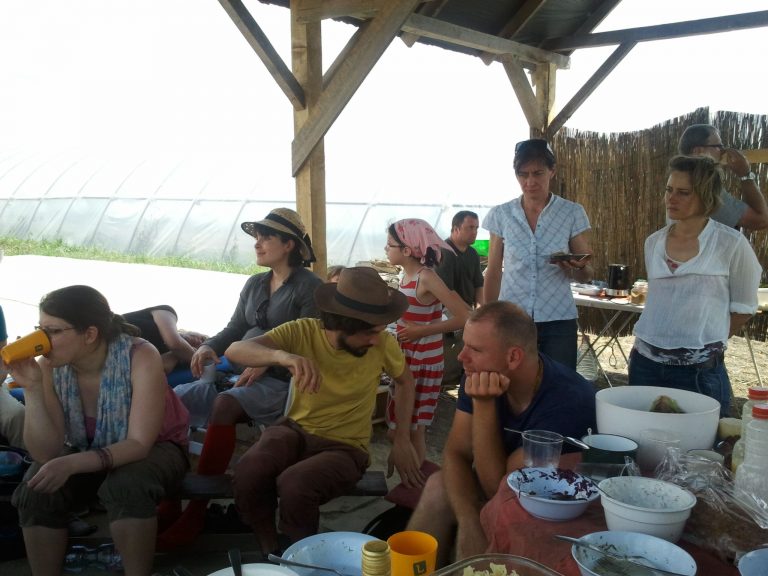In May 2014 Hungarian, Croatian, Czech, Polish, Italian and Swedish activists got together in Vac, near Budapest, to discuss food activism in their countries, including RWS models (the English term, Community Supported Agriculture, was mostly used during the meeting).
 It was an amazing opportunity to see the level of development of CSAs and other food solidarity initiatives in countries from our region and Western Europe.
It was an amazing opportunity to see the level of development of CSAs and other food solidarity initiatives in countries from our region and Western Europe.
Since CSA is not very developed in any of the countries represented, it was actually a chance to exchange experiences between CSA rookies. Which is one of the best ways to learn.
The Hungarian colleagues and hosts not only took us to visit two CSA farms on the island of Szentendre, but they also explained the fact that in their country CSAs function in a grey legal area which NGOs dealing with food activism are only now trying to address.
 A Croatian farmer who has been over the past year coordinating a CSA scheme shared some of the difficulties he had in making it work. It seems that, in his first year, he had taken on too many responsibilities (unlike in our RWS, he was doing packing for the consumers, which takes a lot of time) and set prices too low. His consumers were also not paying at the start of the season but only committed to buying veggies at the start of each month. In a way, this example illustrated how difficult it is for a farmer to trust that consumers are willing to pay a fair price and share in the responsibilities. He would have to rework the model in the next year, our Croatian friend concluded.
A Croatian farmer who has been over the past year coordinating a CSA scheme shared some of the difficulties he had in making it work. It seems that, in his first year, he had taken on too many responsibilities (unlike in our RWS, he was doing packing for the consumers, which takes a lot of time) and set prices too low. His consumers were also not paying at the start of the season but only committed to buying veggies at the start of each month. In a way, this example illustrated how difficult it is for a farmer to trust that consumers are willing to pay a fair price and share in the responsibilities. He would have to rework the model in the next year, our Croatian friend concluded.
Surprisingly for me, Italians and Swedes were not necessarily more savvy in RWS theory and practice than us. The model is more developed in other Western European countries such as France, Switzerland and Austria, and our Italian and Swedish colleagues were quite keen to learn from us how does it all work.
During this meeting, we heard numerous stories of urban gardens. In Croatia, Sweden, or the Czech Republic, many experiments with this model exist, many of them involving an aspect of social inclusion. In Sweden, for instance, our colleagues spoke about the involvement of migrant families in planting the gardens side by side with their native Swedish neighbors, an unprecedented opportunity for integration for people who maybe otherwise don’t mix.
 What is beyond doubt is that food initiatives are increasingly more, in Eastern and Western Europe. Some of them like the urban gardens – of which many are appearing in the last years in Warsaw and other cities in Poland too – give people the opportunity to take over a public space and make it theirs, beautiful and fruitful at the same time. It’s an occasion for those involved in the group to learn how to create a community and make it work towards a common goal.
What is beyond doubt is that food initiatives are increasingly more, in Eastern and Western Europe. Some of them like the urban gardens – of which many are appearing in the last years in Warsaw and other cities in Poland too – give people the opportunity to take over a public space and make it theirs, beautiful and fruitful at the same time. It’s an occasion for those involved in the group to learn how to create a community and make it work towards a common goal.
In other initiatives, like our RWS and other CSAs, we try to go beyond our city communities and reach out to the small and medium farmers in our countries who do not want to give up their land, but they want to continue to make a living out of it.
It’s a time of excitement and learning for food activism. At the moment, many of us are experimenting with various models, seeing what they bring us. With time and more initiatives, we will each be able to choose the ones that are better suited for us, our needs and visions of society.


